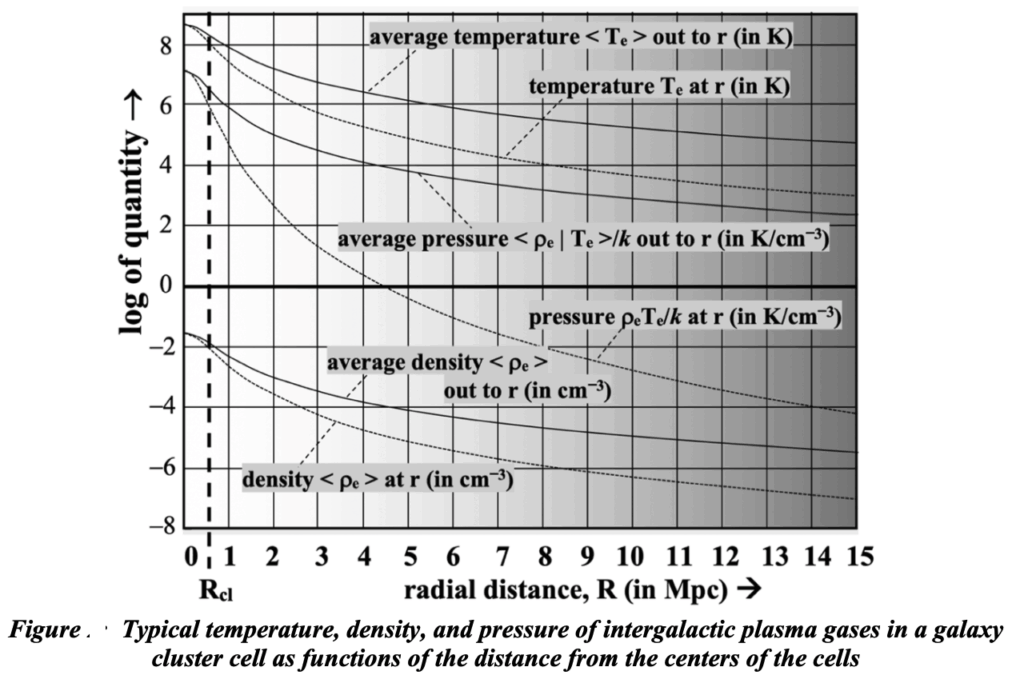Cosmology Papers
These papers describe an alternative cosmological model first addressed by the author in his book, Cosmological Effects of Scattering in the Intergalactic Medium attributed to Ray Bonn, the protagonist of the Bonn novels. The model is based on an alternative explanation of cosmological redshift as resulting from scattering by relativistic electrons in the hydrogenous plasma that pervades the universe. It is galaxy cluster cells (referred more usually as ‘dark matter halos’) are the representative units of the cosmos. Variations in the density and temperature, and therefore hydrostatic pressure, of the plasma through these massive structures produces a redshift correlation functionality that mimics extreme centrifugal velocities of galaxies in the cluster cores and averages out to the cosmological value discovered by Hubble.

These cluster cores and their halos do not posses ‘dark matter’. The ‘fingers of god’ phenomena’ effects are produced instead by the extreme pressure at the center of the cluster cores. Similarly, increased density of plasma around massive galaxies produces the observed extensions to their rotation rates.
- Cosmological Inferences
- Edwin Hubble’s Discovery
- Quantifying Partitions of a Stationary State Universe
- A Thermodynamic Explanation of the Cosmic Background Radiation in a Stationary State Universe
- The Evolution of Gravitational Models Toward a Thermodynamic Model Involving a Stationary State Universe
- The Universe as a Thermodynamic System
- Understanding Galaxy Cluster Phenomena
- Tired light — the Proximate Cause of Cosmological Redshift.
- Cosmological Redshift Mechanism
- Concentric Ripples in galaxy density about the Milky Way
- Thermalization as a Balancing Act Between Baryonic Matter and Radiation
- Problems with gravity and the cosmological constant – taken from Ch 25 of ‘Cosmological Effects book